The last piston la fighter
It took OKB-301 only half a year to build the 134 (La-9М) aircraft, the prototype of the future La-11. In May, test pilot 1947 AG Kochetkov, who transferred to the industry from the Air Force Institute, first lifted the car into the air. In 18 flights with a total duration of 12 hours 37 minutes, maximum horizontal speeds and rate of climb were determined at the nominal mode of the engine, the technical range and duration of the flight.
On the nineteenth of June, the first machine entered the state tests at the Scientific-Research Institute of the Air Force. In comparison with the La-9, on the 134 aircraft, three NS-23С guns were installed, reducing the ammunition of the remaining guns to 225 cartridges.
The oil radiator was moved to the bottom of the engine hood and increased the capacity of the oil system.
Five days later, a doubler “134D” with a longer range appeared at the Chkalovskaya airfield. The fuel reserve on it was increased from 825 to 1100 liters, by installing additional fuel tanks in the wing consoles and providing for the suspension of two non-dischargeable
tanks total capacity 332 liters. The test leaders were AG engineers. Chernyavsky (aircraft "134"), Reznikov (aircraft "134D"), as well as pilots A.G. Terentyev and I.V. Timofeyenko.
Increasing the take-off weight of the aircraft required chassis reinforcement with the installation of main wheels sized 660x120 mm with high-pressure tires. Tail wheel shock absorber mounted on a lever suspension.
The aircraft was equipped with aeronautical lights, an AFA-IM aerial camera for scheduled photography, and an automatic temperature control for the cylinder heads of the engine. As on the La-9, the fighter was initially equipped with the Firechald photo pistol. Subsequently, it began to replace the domestic C-13, with the photogun placed on the right landing gear or on the canopy of the cockpit canopy.
The increased flight duration when accompanied by bombers (over seven hours) required the installation of an additional oxygen bottle, a urinal for the pilot, and adjustable soft armrests and a wide soft backrest on the seat.
Normal flight weight increased by 571 kg. Despite the best efforts of aerodynamics, with a constant power of the power plant it was not possible to meet the requirements set by the Council of Ministers decision. The only exceptions were the range and practical ceiling. Suffice it to say that the maximum speed at the ground was on 25 km / h, and at 6200 meters in height - on 6 km / h less than required by the task.
During the test period ending on July 24, both vehicles flew an 71 flight with a total duration of 59 hours 13 minutes. On the tenth of July 1947, the pilots Dziuba and Alekseenko performed two long-range flights. One - on the most favorable mode (speed - 355 km / h, height - 1000 meters) along the route Chkalovskaya - Kazan - Chkalovskaya - Dmitrov - Orekhovo-Zuevo - Chkalovskaya. The other is at the same height, but at a speed of 473 km / h along the route Chkalovskaya - Cheboksary - Chkalovskaya. The technical range of the flight was determined from the condition that during the flight along the route there will be two air battles with a duration of 10 — 16 minutes (one fight in the middle of the route, the second at the end of the route). Fighting imitation took place at heights 5000 and 7500 m.
In the overflights of both cars, P.M. Stefanovsky, I.M. Dzuba, L.M. Kuvshinov, D.G. Pikulenko, V.I. Alekseenko and V.P. Trofimov. In their reports, they noted: “With the technique of performing aerobatic figures, as well as with the behavior on aerobatics with full refueling, the aircraft is significantly different from the serial La-7 ...
The speed of the turn on 20 — 40 km / h on the device is greater; besides, on a bend, the plane seeks to increase roll and angular speed. Turn time also increases. When performing a combat reversal, the aircraft more quickly dampens speed and tends to increase roll ...
To fly a fighter with full refueling is much more difficult than the La-9 aircraft. As fuel is developed, piloting is facilitated, and with the remaining 400 fuel — 600 liters of aerobatic aerobatics, the behavior of the aircraft in aerobatics is similar to those for the serial La-9.
The load on the control stick from the elevators and ailerons is less than that on the La 9 plane, but they are within the normal range. The load from the rudder on the pedals is great, as on the plane La-9, they must be reduced.
With full refueling at flight speeds of 300 — 450 km / h on the instrument, the aircraft has an inadequate longitudinal stability margin. At speeds less than 300 km / h and large 450 km / h, the plane is almost neutral in longitudinal terms. In the lateral relation, the aircraft is neutral. Traveling stability of the aircraft is sufficient.
When you change the flight speed on the control stick of the aircraft from the ailerons there are variable loads, which in a long flight tire the pilot. It is necessary to install a trimmer controlled in flight.
When losing speed, the plane smoothly falls on the wing while lowering the nose. As soon as the plane on stalling created a heel to 20 degrees and lowered its nose to 10 — 15 degrees, the rudders were given for output. The aircraft in all cases normally listened to the rudders and restored the flight mode ...
Like the La-9, at the slightest demolition at the time of landing, it tends to stall on the wing in the direction of demolition. With a high leveling without side wind and demolition at the time of hand grip, there is also a desire to stall on the wing, which is countered by the timely giving of the back leg. The desire to stall on the wing is a significant drawback of the aircraft, since after a long flight the attention of the pilot dulled. "
Test pilots I.M. Dziuba and V.I. Alekseenko, who performed 10 July 1947 long-distance flights lasting 4 hours 54 minutes and 2 hours 47 minutes, except for the inconvenience associated with the cockpit and controllability of the aircraft, noted: “Air combat above 7000 meters on the plane would not be sufficiently effective, since the excess power of the motor group does not provide the necessary maneuver for the fighter in both horizontal and vertical planes. Virage can be performed with a roll less than 40 degrees with a very large loss of height ... The maximum height of the combat use of the aircraft should be considered the height of 7000 meters, where the vertical speed is of the order of 7 m / s
When imitating air combat at the end of the route, there was a slight darkening in the eyes and there were mild headaches. The aircrew flying on this type of aircraft must be: well physically trained in endurance, provided with a food regime with a reduced amount of ballast products (without fiber) and specially trained for long high-altitude flights. "
Despite the succession of fighters, 134 and 130 revealed 111 defects that should be eliminated as a matter of priority. In the conclusions of the act, according to the results of state tests, it was recommended to shift the center of gravity forward by no less than two percent, to improve lateral stability, to facilitate rudder control and to improve the controllability of the aircraft during landing. There were a number of drawbacks in the cabin equipment.
In addition, it was recommended to install a trimmer on the ailerons, to provide the possibility of installing an electric autopilot EAP-47I, navigation coordinator NK-44, low-altitude radio altimeter РВ-2 and radiation warning system with enemy radars TON-3. There were also suggestions for replacing some devices with more advanced ones.
The report on the results of state tests, approved by the decision of the Council of Ministers of the USSR from 22 August 1947, noted:
3. Consider it necessary to launch a modified La-9 aircraft (...) in a sample that has been tested, with the elimination of defects noted in this act. ”
During the tests, the characteristics of the spin, the tactical data of the machine with the suspension tanks, the reliability of the emergency dropping mechanism of the moving part of the lamp were not determined. Tests of the flashlight dropping mechanism were carried out in December 1946 of the year at the 21 plant at La 9, and on September 9 — 11 pilots of the Air Force Scientific Research Institute AG Chernyavsky and V.I. Alekseenko conducted control tests La 9 and La 11. The results were found to be satisfactory, although it was necessary to refine the drop system.
Simultaneously with the approval of the "Act on the results of state tests ..." the aircraft was given the name La-11, and the plant number 21 began mass production of the fighter under the designation "product 51", which continued for the year 1951. In 1947, the plant launched 100 machines, in 1948,
the largest number is 650. In the same year, the production of the La-11 was stopped, but the following year they were restored, and the plant produced more 150 machines. In 1950, 150 was handed over and in 1951, the 182 of the aircraft. Total built 1182 fighter.
A few months before the start of flight tests of the experienced La-11, the American twin-engine Lightning P-38L-1 entered the NII Air Force. Flight tests, which ended in April 1947, showed that, despite the heavy weight, almost twice the weight of the La-11, the range with outboard tanks from the American was less. The other characteristics were worse, with the exception of the turn radius and the practical ceiling.
La-11 escort fighter was constantly improved. Only in 1948, 210 changes were made to its design, which contributed to the improvement of operational characteristics. La-11 was delivered not only to combat units, but also to flight schools of the Air Force and aviation Navy.
In July, the 1950 of the year ended with the factory, and the 22 of September ended with the state tests of La-11 in the photo reconnaissance version. We installed a rocking machine on the machine with an AFA-BA-40 camera. In the same year, on request of the 100 Air Force, the fighters were converted into reconnaissance aircraft. Of these, 51 was located in Lviv, 30 - in Belaya Tserkov, 11 - on South Sakhalin and the rest - in the port of Dalny.
In the version of the scout with outboard tanks, the La-11 turned out to be overweight, he clearly lacked engine power. Back in April, the 1949 of the plant No. 49 completed the fine-tuning of the 14-cylinder engine ASH-82М with the take-off power of the 2100 hp, and at the height of 5000 m in combat mode it developed the 1770 hp However, for some reason this motor remained in the discharge of the experienced ones. Two years later, trying to raise the take-off power of ASH-82FN to 2000 hp But, as it turned out, to ensure reliable operation of the engine, it was necessary to make significant changes to its design, and further work was stopped. Only later for the passenger aircraft Il-14 created a modification of the ASH-82T takeoff power of the 1900 HP, using the details of the ASH-83, but this was the limit for the ALU-82.
At one of the La-11, held at the Scientific Research Institute of the Air Force Tests, an automatic gearbox was installed for the supercharger, which greatly facilitated the work of the pilot, especially in combat. But for some reason they did not refine the entire fighter fleet.
In 1950, the 150 La-11 was equipped with the PB-2 radio-altimeters, the MRP-48 radio receivers, and the ARK-5 automatic radio-compasses. From this it follows that not all production vehicles leaving the factory airfield were fully staffed with radio equipment.
In the same year, OKB-301 proposed to create a universal fighter on the basis of the La-11, designed not only to escort bombers, but also to intercept air targets, conduct air reconnaissance and solve other tasks facing fighter aircraft. To which Lavochkin, in a letter to Bulganin from 30 March, reported: "It is more expedient to make such an aircraft based on the MiG-15, which would have a range and take-off and landing characteristics closer to La-11."
The float version of the La-11 was also worked out, but it also remained on paper. In the summer of 1951, Plant No. 81 conducted work on the installation of the ARO-11 jet guns on the La-82, but it didn’t go further than the tests.
Even earlier, in accordance with the decree of the USSR Council of Ministers on 12 December 1947, the La-21 anti-bleaching devices started on the 11 plant. From 17 March to 6, April 1948 of the year were held jointly with industry state tests La-11 with anti-icing system, which included a device for heating the wing socks with hot exhaust gases of the engine, electro-thermal stabilizer de-icer, liquid de-icer de-icer and frontal glasses. The wing de-icer worked satisfactorily, but due to the increased corrosion of aluminum alloys used in the wing construction and under the influence of hot exhaust gases, it was not recommended for mass production.
Following this, another La-11, equipped with BO-20 heaters, which had earlier been equipped with fighters, was presented to the state tests. Almost simultaneously, the anti-icing devices of the center section, keel, antenna, and oil-air intake were tested.
In accordance with the decree of the Council of Ministers of 30 in March 1948, the 21 plant equipped the aircraft with the USP-48 blind landing equipment. It consisted of the ARK-5 automatic radio compass, the MRP-48 marker radio receiver, the PB-2 radio altimeter, the EGDM-3 remote gyromagnetic compass and electric artificial horizon, as well as the ground radio system. The car was tested in the spring of the year 1949 in order to work out a simplified method for calculating the blind landing of La-11.
On the above-mentioned 100 aircraft converted into reconnaissance aircraft, there was no EGDM-3 compass, which precluded the execution of a blind landing calculation. After all, EGDM-3 was intended not only for the exit of the aircraft to the aerodrome area, but also for the flight on the glide path beyond the visibility of the ground to the height of 50 m with subsequent visual descent and landing.
For a more reliable take-off from uncrowded snow lanes, they took advantage of the idea of take-off skis, proposed even during the war by the test pilot of the Research Institute of the Civil Air Fleet B.K. Kondratyev. The aircraft they rolled and fixed stops. After takeoff, the skis remained on the ground. Aircraft roll-in was carried out by a team of 15 people for two or three minutes. When using hydraulic raisers, five people were enough to install on skis, but the time increased to eight to ten minutes. March 30, 1948, the pilot AG Proshakov conducted special tests to determine the possibility of a safe take-off of La-11 on take-off skis from unskilled snow. Four take-offs he performed on wheels with a rolled snowy runway and six - on skis with an undisturbed lane. The run length increased from 505 to 620 m, and the run time increased from 16,5 to 18,6 seconds.
In the conclusion of the act, according to the test results, it was said that taking off on skis is possible provided that the pilot had excellent command of the technique to take off without skis, a smooth snow cover of the runway and a side wind speed of no more than 3 — 4 m / s.
In 1947, the reversing screw VISH-9-RE was investigated on the serial La-107. Tests have shown that the landing properties of the fighter have improved dramatically. Following this, several La-11 installed reversing screws with a modified control system that simplified landing on ice airfields, as this did not require vigorous braking. However, it didn’t go further than the experiments, because there was a fear that when operating the aircraft in the summer with increased dusting, the engine could be reduced due to abrasive wear.
In 1950, in the Air Force units there were cases of stopping the engines on the 11 La when performing a combat reversal after diving. Investigation showed that when the remaining fuel is less than 75 liters with this maneuver, it was stopped in the engine. After the flight studies, the Air Force Research Institute established the minimum fuel residue 110 liters. Subsequently, the fighter's fuel system was finalized.
At the beginning of the operation of the La-11 in the front-line units, flight incidents occurred with violations of the aircraft’s controllability. In 1951, the Air Force Research Institute, with the participation of the leading test pilot AG. A malt-research work was performed entitled “Determining the characteristics of deep vertical spirals from a height of 7000 meters.” Studies have shown that when flying in certain modes that exceed the speed limit or the number "M", La-11 is diving into a dive with the appearance of pulling forces on the control stick. All this is reflected in the addendum to the instructions on the technique of piloting a fighter.
Combat service
Even before the advent of La-11, the idea was born of using a fighter to protect our polar regions from unwanted guests. It was planned to place the aircraft on the airfields and sites in the Arctic Circle, including on the drifting ice floes. This required a series of experimental work on the basing of the La-11 on ice airfields in northern latitudes.
One of the first expeditions took place in the 1948 year. At this time, several scientific expeditions of the USSR Academy of Sciences were operating in the North Pole area. It was decided to fly the group La 11 to one of the ice floes used by scientists. The expedition was led by Major General, Head of the Main Directorate of the Northern Sea Route (GUSMP) A.A. Kuznetsov. The expedition was provided by the crews of the 2 X-NUMX-th separate transport aviation regiment, the X-NUMX C-650 47-th adon transport regiment, and the 1-X special-purpose transport aviation regiment.
A twin-engined Tu-6 bomber (a modification of the Tu-2), used as a leader, and three La-11 carried out training flights in polar conditions, based on Cape Schmidt and Wrangel Island. Initially, the Tu-6 flew from Wrangel Island for reconnaissance, which had fairly good navigation equipment. He landed on the ice near the North Pole (82 degrees 51 minute north latitude and 172 degrees 30 minutes east longitude). Then he returned to the mainland, and when the 7 weather was favorable, in May 1948, three La-11s, accompanied by the leader Tu-6, flew out onto an ice floe, making a safe landing. 8 May, after completing several flights from the ice, they returned back. Later there were several more such expeditions in different regions of the Arctic, and only then did La-11 begin to keep watch on the protection of our northern borders.
For this we had to solve a number of technical issues. In particular, it was necessary to equip the aircraft with anti-icing systems (they were not installed on the machines of the first series), to improve navigation equipment, to ensure take-off from uncropped snow strips. At different times, fighters La-11 1-iad and 53-iap were involved in the work in the North Pole area. In December 1949, some expedition members were awarded the title Hero of the Soviet Union. Among the awardees were squadron commander V.D. Borovkov and navigator S.A. Skornyakov (commander of the group) 1-iad, as well as deputy commander of 53-th iap V.А.Popov.
The idea of ice airfields has long stirred up the minds of the military, but not one such airfield has begun to work as aircraft on alert.
Operation of the La-11 showed that the volume of the oil tank (50 liters) standing on the fighter was clearly not enough for a full-range flight, and the military demanded an increase in its volume. As a result, in the summer of 1949, the OKB Lavochkina developed design documentation for installing an additional tank on the 11 La at the Air Force repair shops.
At about the same time, another mass defect appeared on the La-9, Util-9 and La-11 - the deformation of the 12-th fuselage frame. The finalization of the machine started on January 31 1949, after the release of the bulletin to strengthen this frame.
The first combat use case of the La-11 dates back to 8 on April 1950. On that day, the fighter link from the 30 Guards Iap under the command of B. Dokina intercepted an intelligence officer of the US Navy in the Libava naval base over the Baltic Sea. According to the magazine Aviation World, it was PB4Y. At the same time, the Izvestia newspaper, which investigated the incident, believes that Boeing’s B-29 was shot down.
Participants in those events said that the “American” did not obey the requirements of the Soviet pilots to go on landing and began to shoot. In response, fire was opened to kill, leading to the death of the car and ten crew members.
In the same year, a pair of La-11 piloted by pilots I. Lu-kashev and M. Schukin of the 88th Guards Iap Pacific fleetintercepted a P2V scout Neptune.
In 1950, the first La-11 aircraft entered China. In the summer of the same year, the personnel of the 351 th iap (commander Hero of the Soviet Union VN Makarov) of night fighters (45 machines), formed shortly before, began to retrain the Chinese pilots on La-11. But the combat work of the regiment began in the spring. In April, the pilots P. Dushin and V. Sidorov opened a combat account of the regiment, shooting down a B-26 bomber belonging to the Chiang Kai-shechists over the Xuzhou airfield. It was not possible to establish the exact number of fighters supplied by a friendly country, but it is known, for example, that in accordance with the decision of the USSR Council of Ministers on August 25 1951, the People's Republic of China received 60 La-11. Until the end of 1950, the regiment was located near Shanghai and at the beginning of the next year flew to the Far.
In China, La-11 often met in the air with the P-38 "Lightning" and P-51 "Mustang" fighters. One of them, April 2 1950, sadly ended for the Americans. That morning, a pair of fighters, driven by a pilot N. N. Guzhov, intercepted and destroyed two Mustangs that invaded China’s airspace.
On the thirteenth of June of the same year, the regiment flew to Anshan and two weeks later joined the military work to repel the attacks of American bombers on cities and industrial facilities in North Korea.
The first victory on La-11 in Korea in the autumn of 1951 was gained by the pilot of the 2 Squadron, Lieutenant V. Kurganov, knocking off the B-26 "Marauder", the main night bomber of the American air forces in Korea. There were no difficulties in fighting this veteran of World War II. It was much harder to intercept B-29.
Usually, the “Super Fortress” flew on bombardment at altitudes of about 10 km. To reach this height, the La-11 required 26 minutes. The speed advantage at the height of the practical ceiling at the La-11 was small and did not exceed 20 km / h. Agree that the chance of interception was a little. In addition, after receiving information about the persecution, the American pilots
you with a gentle dive easily went to the side of the sea. Pilots La-11 did not manage to win a single victory over B-29.
At the beginning of 1952, the 351-th Infantry left one squadron each on the MiG-15 and on the La-11. The remaining 12 piston fighters fought in the regiment until the summer of next year, and B-26 were still their main opponents.
One of the most popular American fighters of the Second World War was the R-51 "Mustang". Its most recent modifications, “D”, “H” and “K,” lasted the longest and participated in the Korean War. There, they were mainly used to escort bombers, while RF-51D and K modifications were used for reconnaissance.
A comparison of the P-51D with the La-11 shows that at approximately the same specific load on the wing and greater thrust-to-weight ratio, the lighter La-11 had a slightly smaller range and maximum speed. This can be explained by the large frontal resistance of the star-shaped motor ASH-82FN. La-11 had a worse ceiling, which, apparently, is due to the lower altitude of the engine.
“Mustangs” of the “D” modification in small quantities got into the Soviet Union in the years of the Great Patriotic War, and some of them flew around test-pilots LII. Fully determine the flight characteristics of the machines failed, but some conclusions have been made. The heavier P-51D gained height more slowly and was less maneuverable to the 5000. Above the car seemed to be replaced. In general, it was a good escort fighter, especially if you consider that long-range bombers flew at high altitudes. And in this respect he was somewhat superior to the La 11.
On February 23 1950, air defense posts in the area of responsibility of 54-iaq were recorded and identified by three American B-29 bomber on the Tallinn-Riga route. At the time, only the Lavochkin piston fighters were in service with the corps. As the former air force commander of the Baltic Military District of the GSS, Colonel-General F.I. Shinka-Renko, the aircraft is complex, not equipped for night flights. At low altitudes you will not go on it, and the violators went almost on a shave.
On that day, the weather was difficult, low clouds, the ground was softened, and the lavochkin needed concrete to take off. We had to lift a fighter link from the Chkalovsk airfield (formerly Zidlung) in the Kaliningrad region. One of them could not break through the clouds and returned, while the rest intercepted one of B-29, which had already turned and was going to Klaipeda. The fighters ordered him to follow them, he ignored their teams and calmly left. It was impossible to shoot, for this a special permission of the high authorities was required. (“Labor”, October 30 1993 of the year.)
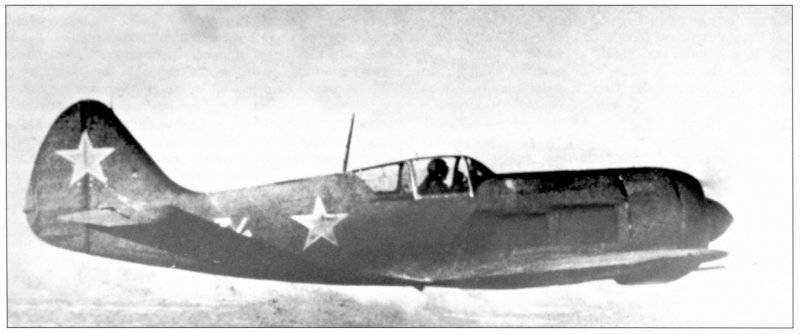
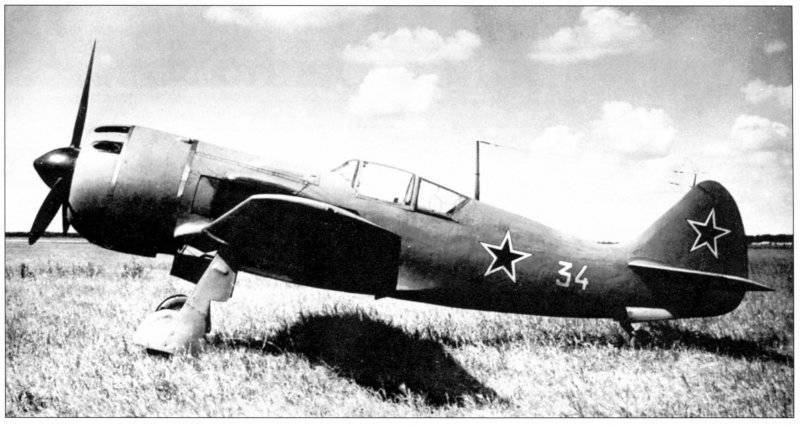
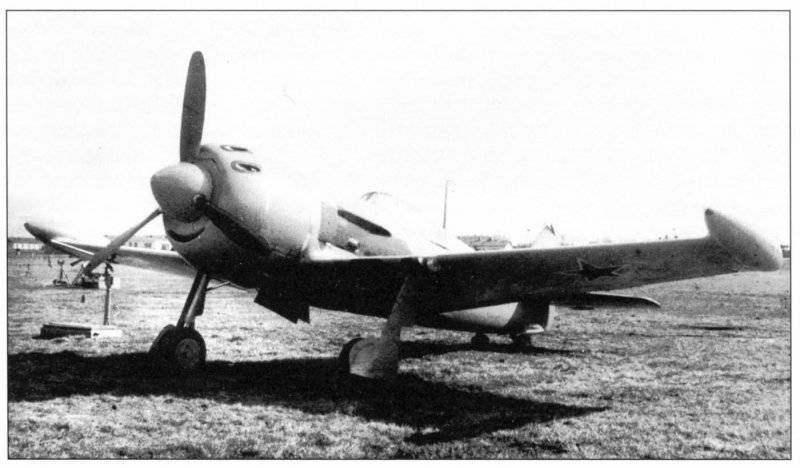
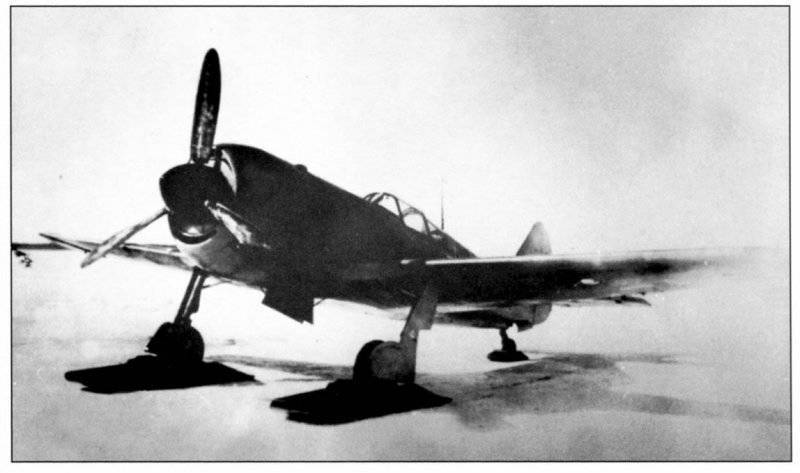
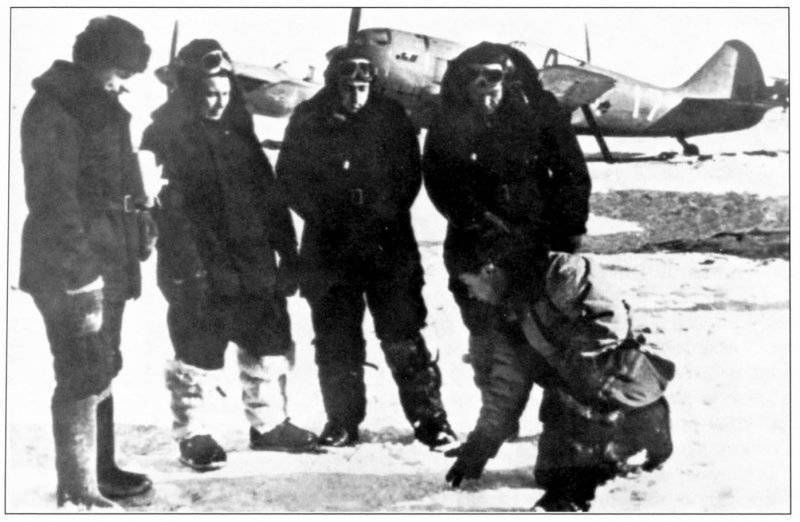
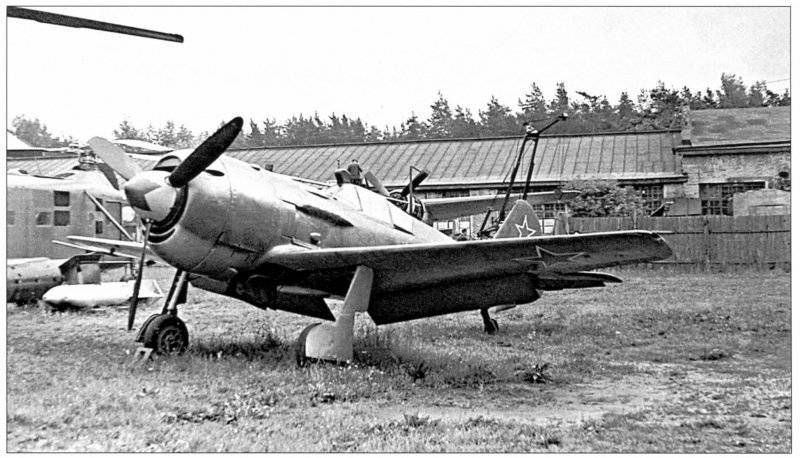
Information